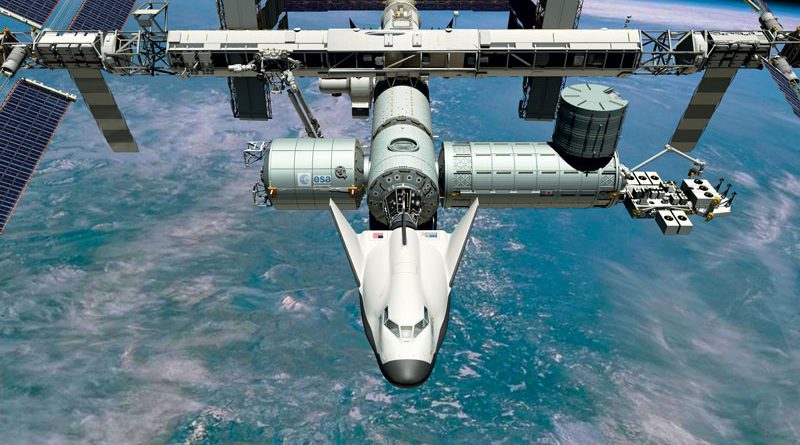Threaded Screws at Work into Space
The International Space Station (ISS), bigger than a football field, flies at an altitude of 400 km with such speed that it defies gravity. Within a project started in 2015, three ball screws, Carry Type KGE, from Eichenberger Gewinde manage the docking of the first innovative, re-useable space glider “Dream Chaser”, which will be able to dock on the ISS since 2020.
by Ursula Schädeli
Ball screws, KGT type, from Eichenberger Gewinde are some of the most commonly used drive systems in many industries. The advantages of this drive system are its high efficiency and energy efficiency. Eichenberger’s screw technology, thread rolling (cold-forming of the surface of round components), combines the highest carrying capacity and power density with extreme dynamics and precision with maximum performance. It is not rare that solutions for exotic special applications begin with inspiring discussions. In 2015, a project was launched in Burg with the globally leading supplier of products to the aerospace industry. The goal of this collaboration is to execute docking manoeuvres during a space rendezvous between the ISS and the innovative, re-useable space glider “Dream Chaser” from 2020. The docking unit, which is “300% safe” and functional, is the integral part. The centre piece inside this docking system consists of three robust, corrosion-resistant ball screws with end cap ball return, Carry Type KGE, 16 x 16.
The new space shuttle will blast off inside the nose of the Atlas V launch vehicle to go into near-earth orbit. It can fly with or without a crew and land at any conventional airport. There is room for up to seven astronauts in the space glider. The “Dream Chaser” could, for example, be used as a research platform, to transport people or freight into space or to actively remove space junk from orbit. Using the docking unit in which Eichenberger’s ball screw Carry guarantees a precise, safe docking procedure, the Dream Chaser will be able to dock on the ISS, the occupied station in orbit. At a speed of 28,800 km per hour, the flying laboratory only needs 92 minutes in zero gravity to surround the earth.
The hurdle of vacuum
The first major hurdle after the strenuous rocket launch with extreme acceleration and vibrations, is the vacuum. It has an effect on everything that is liquid or that can evaporate. This also includes lubricants.
Grease that is solid on earth, evaporates in a vacuum. That is why mobile parts must be able to comply with maximum service life requirements, even without lubrication. Temperature extremes are also challenging. The temperature of the components in orbit depends on the material that faces the sun. -50°C to +90°C is expected on the docking station. Additionally, ultra-violet light, X-rays, particles with a high energy charge and atmospheric atoms have an impact on the material which becomes more prone to corrosion.
Avoiding corrosion and wear
Eichenberger is proving that the peculiarities of the Inox ball screw Carry, with integrated high-performance plastic in the ball return, will withstand the aggressive environment of space, ensuring function as well as resisting corrosion and wear. Cold-rolling threads creates very precise geometries with a high surface quality. As opposed to grinding, milling or turning, during milling, the material’s longitudinal fibres are not cut but diverted. The result is a compressed and extremely resilient surface which has been rolled smooth. This is essential for the long service life of a screw.
Roughness values around Rz 1.0 on the edges of the thread are also excellent advantages. In steel ball bearings, the rolling friction
co-efficient is about 0.0013 compared with sliding friction of steel on steel (lubricated) of 0.1 to 0.05. The excellent sliding properties of cold-rolled ball screws ensure minimal friction and provide little scope for contamination. The quiet rolling of the balls is therefore very easy.
Besides, thanks to the innovative Hard-Inox® P treatment, the highest requirements concerning surface hardness and corrosion resistance of stainless steel were fulfilled. During this process, the performance of the lateral structure of corrosion-resistant steel is significantly increased, thanks to high-temperature nitriding. (Surface hardness reaches 550 to 750 HV with a hardness penetration depth of 0.1 to 1.0 mm).
The great advantage lies in the increase in service life and value retention. The art is to master warpage and changes in dimensions despite the high-temperature treatment. The perfect combination of hardness and precision has to be achieved.
(Ursula Schädeli, Marketing, Eichenberger Gewinde AG)

